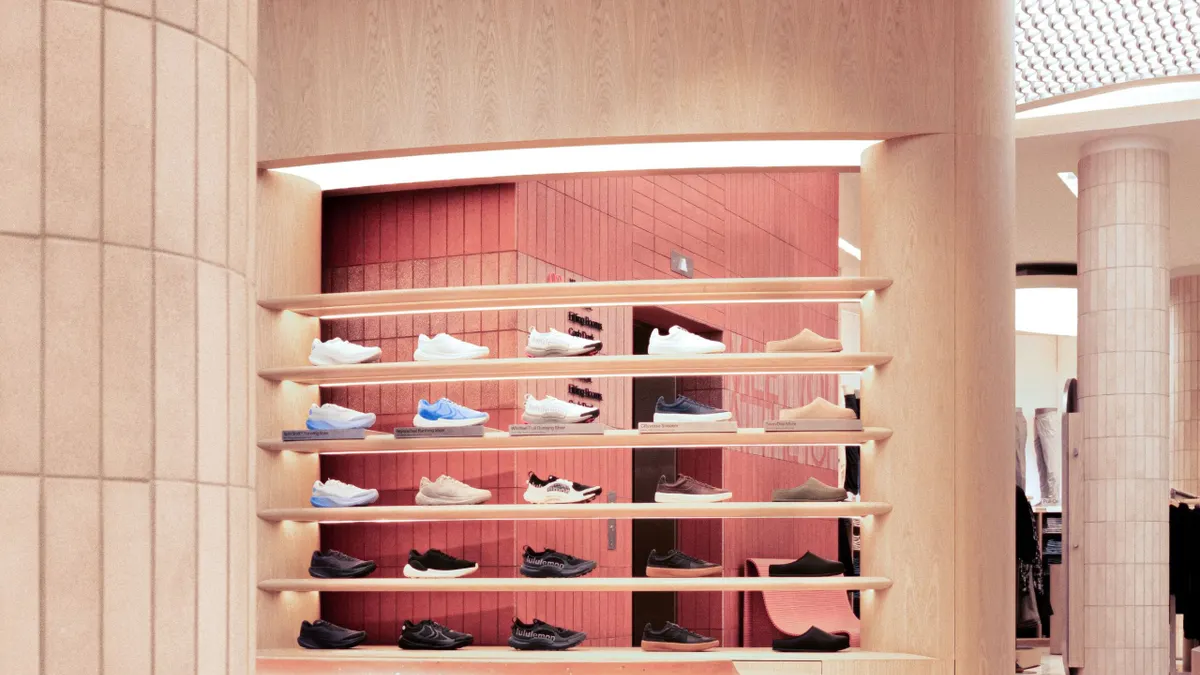Flash sales, the online discount sales model that seemed so promising as the economy was exiting the worst recession in years, are no longer viewed as retail’s latest breathless innovation. While they had initial success as the Great Recession ebbed, their long fulfillment times, Draconian return policies, and increasingly limited merchandise have worked against many of them in recent years.
But, even with all the doomsday predictions directed their way, they’re not necessarily a flash in the pan, either.
Wall Street, retailers, and the flash sales sites themselves have reassessed where the concept does fit into modern retail. More and more, they are proving useful as another channel for larger retailers like department stores, and at least one is also finding success with careful curation and top-notch personalization.
The limits (and endurance) of its 'innovation'
While flash sales appeared to have had their moment, and many wondered by the end of last year whether that moment was over, the model does seem like it will survive. This may be because the essential concept behind the flash-sales idea—limited quantities, limited availability, limited price, for a limited time—is not really that new. Retailers from time immemorial have used scarcity as a way to push potential buyers over the edge to make the purchase.
The good news for flash-sales sites is that the concept is ancient precisely because it works, says RSR Research analyst Nikki Baird.
“I think it works, the way ads work,” Baird told Retail Dive. “If you ask consumers, they’ll say they hate ads, but ads work. And they might not appreciate the time limit of flash sales, but psychologically, they work.”
But, she agrees, their niche is proving to be more limited, with their usefulness relegated in some cases to merging with larger retailers' overall sales strategies. Some, like Gilt, which in January was acquired by Canadian department store retailer Hudson Bay Co. for $250 million, will morph from a stand-alone retailer to a new channel for a traditional retailer.
Hudson’s Bay purchase of Gilt Groupe seemed to underscore the downfall of the model, considering Gilt’s previous valuation of more than $1 billion. But the move solves problems for both Saks and for Gilt, especially as Saks looks to compete with Nordstrom.
The acquisition could help Hudson's Bay revamp its Saks Off 5th stores, with plans to feature Gilt "concept" stores in its physical stores and capitalize on Gilt's digital savvy, which includes 9 million members and a strong millennial following. Gilt customers will be able to return merchandise at Saks Off 5th locations, bringing in foot traffic for the brick-and-mortar and easing customers' anxiety of buying online for Gilt. The companies said when they announced the acquisition that the deal will help them reduce shipping costs and increase purchasing power. Hudson’s Bay did not respond to questions for this story.
Gilt has a strong mobile base, with about half of its orders coming in through its mobile platform. If Husdon's Bay is able to capture some of these mobile capabilities and bring them to the rest of its brands, it will help at a time when department stores are desperately trying to revamp their e-commerce operations to stay competitive.
Indeed, for Saks, Gilt is a “techquisition,” something Profitero’s Keith Anderson told Retail Dive would likely be happening a lot this year. Gilt offers Saks technology and a new online sales channel without having to build one from scratch.
And for Gilt, excess high-value inventory from Saks Fifth Avenue, Saks Off 5th, and possibly other Hudson’s Bay retailers makes up for the dearth of inventory that has hobbled flash-sales sites after their initial rise to prominence during the recession.
The discovery zone
But, while it’s true that flash sales could help move excess inventory in a well-targeted way, says Baird, the model also has the potential to serve as a portal for discovery.
By the time shopping-channel retail company QVC acquired Zulily last summer (another fall from grace of a flash-sales site that at one point seemed destined for runaway growth), the emphasis was not about limited quantities for a limited time, but, rather, about “discovery.”
“QVC and zulily are the leaders in discovery-based shopping on televisions and the internet, from phones to PCs to mobile devices,” Liberty Interactive president and CEO Greg Maffei said about the announcement.
Indeed, Zulily’s co-founder and CEO Darrell Cavens had already favorably compared Zulily to QVC more than once, months before, telling the Wall Street Journal in 2014: “QVC is very much about discovery-based shopping.”
“If you're out there and you've got something in mind, it's highly unlikely you'll turn on QVC and wait seven hours for that to come on,” Cavens said. “So it's very similar to Zulily. If there is a product your daughter absolutely loves, it's likely we're not going to have it today. Customers coming to our site don't know what they are going to get.”
Why personalization matters
While the limited-quantities, limited-time, “bluelight special” aspect of flash sales may be nothing new, the tech side of the model very much is.
Jane.com, a flash sales site that unlike Gilt and others, has not received venture capital funding and has been turning a profit for a while according to executives there, is carefully curated and tightly calibrated. The retailer knows its busy times down to the minute and continually hones the personalization of its marketing and communications with its customers.
Rather than acquire pallets of inventory (or access to inventory), Jane works with sellers and operates like a marketplace. A team of buyers makes decisions about what items to feature and time limits are decided depending on inventory. The site is mobile first and data-driven, with a “Pinterest-like” discovery-based approach, according to Jane.com COO JD Stice. And the level of personalization is high-key, not just with its customers, but also with its sellers, Stice says.
“We don’t control the shipping, but we do certain things to encourage and incentivize our sellers, so we can control speed and fulfillment as much as possible without ever touching the product,” Stice told Retail Dive. “That’s been our model since the beginning. We have very close relationship with a lot of our sellers. For some of them, their entire business model is selling with us.”
Jane seems to be benefiting from having a team dedicated to curating its product assortment, an old-fashioned but clear necessity in retail. They also make on-going tweaks to its data-driven insights, which means their ability to communicate with customers is always improving, according to Stice.
Plus, Jane works closely with its sellers to ensure that fulfillment is speedy, eliminating one of the key complaints of many flash sales customers, and an oft-noted reason for Zulily's stumbles.
The pitfalls
Flash-sales sites, even with sites like Jane.com thriving on their own, may work best as a facet of a department store retailer’s overall strategy. But they may not last if they’re treated more or less as a way to unload distressed inventory, says Anthony Rodio, executive chairman at Storefront, which works with retailers and property owners on pop-up and other short-term leases.
“The concept of distressed inventory needing to be moved is never going to go away,” he told Retail Dive. “The problem is that consumers figured it out, and even more importantly the brands and the retailers realized they were letting [flash sales sites] take their customers.”
Another risk for the model, even if sites are more comfortably situated within a retailer (as Gilt is with Sak’s and HauteLook is at Nordstrom) is that retailers begin to include lower-quality items to meet the need for a continuous flow of merchandise.
That has happened with retailers’ outlet stores, which have irritated consumers and in some cases could damage the flagship brands.
“It’s tempting to lower the quality,” Baird says. “Outlet stores became such a huge craze that they needed the inventory to feed the beast, so it’s a very real possibility.”
Still, she says, the nature of apparel retail is that there will always be excess inventory. The question is how retailers will move it. And the personalization, mobile-friendliness, and that flash-sale urgency could continue to be a good way for some retailers to move that along, into the hands of consumers who want it.
“Retail stores will always risk overbuying than selling out too quickly,” Baird said. “So there’s always going to be some room. I think what might be really interesting to look at is how [flash sales sites] are competing more with T.J. Maxx or Ross stores and how, because T.J. Maxx and Ross have been very anti-e-commerce, maybe they’re going to have to up their game.”






















